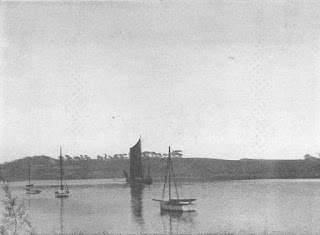Defunct Machinery (Orford Ness)
A sound painting (audio edit) as I envision Orford Ness.
In the mid-1930s, the Ionospheric Research Station was based here, to study the "death ray" and other radio detection systems as a defense against enemy aircraft. (Sebald references an audible "hum" on page 237). I wanted the music to evoke this, with the air buzzing with "radiation", and explosions off in the distance, an "echo" of World War II.
***
"My sense of being on ground intended for purposes transcending the profane was heightened by a number of buildings that resembled temples or pagodas, which seemed quite out of place in these military installations. But the closer I came to these ruins, the more any notion of a mysterious isle of the dead receded, and the more I imagined myself amidst the remains of our own civilization after its extinction in some future catastrophe. To me too, as for some latter-day stranger ignorant of the nature of our society wandering about among 'heaps of scrap metal and defunct machinery, the beings who had once lived and worked here were an enigma, as was the purpose of the primitive contraptions and fittings inside the bunkers, the iron rails under the ceilings, the hooks on the still partially tiled walls, the shower heads the size of plates, the ramps and the soakaways. Where and in what time I truly was that day at Orford Ness I cannot say, even now as I write these words. All I do know is that I finally walked along the raised embankment from the Chinese Wall Bridge past the old pump house towards the landing stage, to my left in the fading fields a collection of black Nissen huts, and to my right, across the river, the mainland. As I was sitting on "the breakwater waiting for the ferryman, the evening sun emerged from behind the clouds, bathing in its light the far-reaching arc of the seashore. The tide was advancing up the river, the water was shining like tinplate, and from the radio masts high above the marshes came an even, scarcely audible hum. The roofs and towers of Orford showed among the tree tops, seeming so close that I could touch them. There, I thought, I was once at home. And then, through the growing dazzle of the light in my eyes, I suddenly saw, amidst the darkening colours, the sails of the long-vanished windmills turning heavily in the wind." (pp. 230-237)
***
I suspect land artist Michael Heizer might have been influenced by Orford Ness for his "City" compound in Nevada, which I believe had military implications (nuclear testing in the 40s), and a place I wrote a "soundtrack" for. It was on my Music For Places II album, from which I am re-using some of the individual tracks. http://bit.ly/2Lv3muQ



Comments
Post a Comment